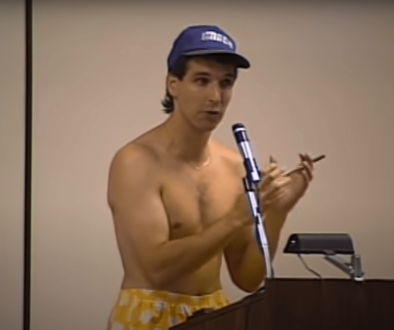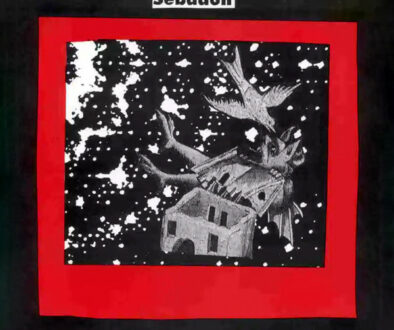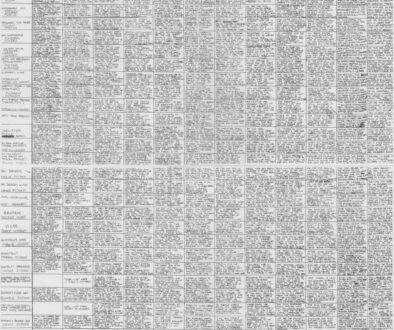Goals, Motivations, Fears, Desires (Book Three Part 1: Silver Age Animal Man, Morrison’s First Arc)
Previously in The Last War in Albion: Alan Moore wrote Watchmen, an accidental magical ritual to avert nuclear armageddon. The ramifications of this were considerable. Moore withdrew from the mainstream comics scene both to recover from the exertion and to plot his next moves, while his magic’s unintended consequence transformed the Cold War into the Last War in Albion. This required that Moore have a rival, and so, equally unwittingly, the brash young Scottish comics writer Grant Morrison stepped into the role.
Morphogenic graft reset accomplished. Reassembly from template imminent. Reset personality parameters: subset goals, motivations, fears, desires. Reinsert subject into the continuum. —Grant Morrison et al, 52
The Great Work completed, its tyrant father absent, temporarily ensnared in its thunderous wake, his grand throne vacant, Grant Morrison was free at last to make their devil’s bargain and obtain all that they thought they wanted.

On the train down to London to meet with Berger and Giordano, they frantically scribbled ideas. Among them was Animal Man, a profoundly obscure 1960s DC character introduced in Strange Adventures in a strip called “I Was the Man with Animal Powers” by Dave Wood and Carmine Infantino. Strange Adventures was emphatically a book that belonged to an earlier era of DC. It launched in 1950, deep into the post-World War II superhero bust and well before Frederic Wertham’s moral panic transformed the landscape to make them viable again. DC’s superhero publishing line had been whittled down to a bare core of Batman, Superman, and Wonder Woman titles, with the last exception, the adventures of the Justice Society of America in All-Star Comics, a bare few months away from transforming into All-Star Western to join All-American Western, Western Comics, Dale Evans, and Jimmy Wakely, in DC’s western stable. Elsewhere DC published a bevy of funny animal comics, romance comics, a smattering of crime comics, and a couple of Archie knockoffs. But they lacked a science fiction comic in their stable, and launched Strange Adventures. Unsurprisingly, the editor behind the project was Julius Schwartz, who had previously been the literary agent of sci-fi writers such as Alfred Bester, Ray Bradbury, and H.P. Lovecraft. It was through these connections, presumably, that he was able to launch the comic with an adaptation of the forthcoming Robert Heinlein film Destination Moon.

By 1965, however, Strange Adventures had become the oddball in DC’s lineup. It and its sister book Mystery in Space were still running as a vestigial remnant of the science fiction line, just as Young Love and Girls’ Romances represented the bare core of the romance line. (Westerns and funny animals had already died off.) And “I Was the Man with Animal Powers” existed within this limbo state. On one level, it was clearly a superhero story; its plot concerns a man, Buddy (later Buddy Baker) who is exposed to a mysterious radiation from a crashing spacecraft, gains the eponymous animal powers, and fights a giant monster. And yet the story resisted such easy classification. Most obviously, Buddy spent the entire story in his ordinary clothes instead of adopting any sort of costume, similarly avoiding taking on a straightforward superhero name. Indeed, at the end of “I Was the Man with Animal Powers” Buddy seemingly loses his powers again, returning to an ordinary life, only newly filled with the courage to propose to his girlfriend, albeit not without fainting immediately afterwards.

Structurally, meanwhile, “I Was the Man with Animal Powers” owed more to science fiction than its superhero trappings let on. The story concerned a man with powers, yes, but it was more of an exploration of those powers as an idea than an exploration of the genre tropes of superheroes. The first part sees Buddy taking on the obvious bevy of animal powers as he addresses the release of a bunch of circus animals that, in a somewhat convenient bit of plotting, escaped at the same time as the mysterious crash. He takes on the agility of a tiger, the swimming of a sea otter, and the strength of both a gorilla and an elephant. In the second part, however, as he faces down a giant alien monster that also has animal powers, his powers begin to fail. This is the setup for a less obvious use of his animal powers as he exposes the monster to a cage full of mice, causing the monster to spook and run off a cliff having taken on the mice’s timidity.

This could easily have been a standalone one-shot, but instead Wood elected to bring Buddy Baker back for second installment, this time drawn by Gil Kane, perhaps unsurprisingly titled “The Return of the Man with Animal Powers.” In this story the aliens whose ship caused Baker’s empowerment return with elaborate dreams of world conquest. Their return also reactivated Baker’s powers, however, and he was able to stop both them and their bright pink tentacled insect steed. This time Stone kept the option for further stories explicitly open, ending with Baker musing, “My animal powers… that the aliens’ ray gun activated… I’ve still got them! Perhaps… perhaps they won’t go away and I can utilize them again to fight any evil that might again threaten mankind!” And indeed, Wood returned to the character six months later, finally putting him in a costume (bright orange, adorned with a large blue A with pronounced serifs that wrapped around to form a belt) and a name (A-Man). This time he was fighting a mundane crime boss instead of aliens. The crime boss made a return five months later alongside Baker, now renamed Animal Man, in a story where the twist was that the zoo Baker planned to draw his powers from was closed and he had to make do with a rabbit and a garden snake.

A final story, some eighteen months after the first, saw a return to the enthusiastic barminess of the early strips as Animal Man faced down the Mod Gorilla Boss, who, as the name suggested, was a giant gorilla in black and white strips and a pink polka dot tie who doubled as a crime boss. (The late reveal this time was that he was actually an ordinary gangster using gorilla serum.) This, however, would be the end of the character until 1980 at which point he was somewhat randomly brought back by Gerry Conway during his largely forgettable Wonder Woman run. Four years later he joined fellow DC obscurities Cave Carson, Congorilla, Rip Hunter, Immortal Man, and Dolphin in the wryly named Forgotten Heroes for a team-up with Superman in Action Comics written by Marv Wolfman, who took the gimmick out for another spin in DC Comics Presents a few months later. Obligatory Crisis on Infinite Earths cameo aside, that was it for the character. This brief run—mostly the 1960s material—made a minor impression on Morrison when they were reprinted in the early 1970s as backup features in Adventure Comics.
Morrison has been clear that they did not pitch Animal Man out of an especially deep and abiding love for the character. Yes, writing in the letter column at the back of Animal Man #2 they claim to have “entertained myself with ideas of what I would do with all my favorite characters, given half the chance. For some reason, Animal Man was never far from my thoughts. I felt sure that the character had some potential and deserved to be given a shot at the big time,” and that they thought of the opportunity to pitch to Karen Berger as “the ideal opportunity to give my childhood fave his big chance,” this was the same column that they opened by explaining that “this is the part of the book where someone rambles on at tedious length about how they’ve wanted to write this or that particular character since they were able to read” and advised readers to “go and do something more interesting with their lives” than read it. Their account in Supergods is probably more accurate; “I’d seen him in reprint comics and I figured no one else would remember him.” Certainly there’s a sense that Berger and Giordano were treating obscurity as a selling point in the pitches they heard—Gaiman got in after successfully stumping Karen Berger with Black Orchid. And so Animal Man became the vehicle by which Grant Morrison would make their name.

Morrison’s pitch was originally for a four-issue miniseries, and although it was expanded to an ongoing before the first issue even released on the strength of his work. The increase in regard the project was held in both when accepted and when published is perhaps most clearly illustrated in the fact that the artist assigned to the project was Chas Truog, a relatively inexperienced artist who, while never objectionable, was also far from destined for bigger things. By the time it was published, however, it had also been given covers by Brian Bolland, who was fresh off of the publication of The Killing Joke two months previously, an immediate marker that this was a series to take seriously. The first four issues, issues, then, represented by far the biggest project of Morrison’s life, a vital audition that they demonstrably nailed. And yet curiously, they approached it with an approach more reminiscent of their work on G.I. Joe and Doctor Who comics than how they approached Zenith or, perhaps more to the point, juvenilia like Gideon Stargrave and Captain Clyde. Which is to say that at their heart was a cold calculation about precisely what the publisher wanted. And in the case of DC in mid-1988, this meant an Alan Moore riff.
Morrison was well aware of this, and has said as much, explaining that Animal Man was “written in a vaguely Alan Moore-ish style and it’s because I was trying to sell to companies who thought Moore was the sine qua non of the bees knees and those stories were my take on what I figured they were looking for.” This also helps explain the specific choice of characters. Given that it was Karen Berger taking the pitches, they were looking for things in the vein of Swamp Thing. Alan Moore had hit the big time with his take on a plant-based character. If one was to copy him while retaining room to do one’s own thing, an animal-based character was an obvious choice.

But the Moore influence went deeper than mere character selection. Morrison’s first arc was in many regards an attempt to do what Moore had done on Swamp Thing with a different character. It’s a horror-tinged story with ecological concerns for which, as Morrison notes, “I pulled out all the dreary old ‘British Comic Writer’ clichés like poetic captions and tacked on subtext and glaringly obvious panel transitions.” And it’s true, most of what Morrison describes is present in the story. Its opening narration, “Ten miles outside the city, the screaming begins in earnest… Quiet at first, like a commotion heard in another room, it grows steadily louder with each step… Screaming… the monkeys screaming… rattling the bars, hammering the wire mesh, playing their cages like tuneless instruments… and the smell… God! The stink of the city… huge and sick… coughing up its guts, voiding its bowels into the rivers, into the seas” clearly evokes some of Moore’s more florid captions. And throughout the comic Morrison uses oblique and thematic transitions akin to the ones that fueled Watchmen—from a woman saying that her husband “only shoots blanks,” for instance, to a man loading a shotgun for bird hunting.

The plot too was adjacent to Swamp Thing, seeing Animal Man investigating a bizarre incident at S.T.A.R. Labs in which a bunch of test monkeys were inexplicably fused into a single gestalt entity—a grotesque pillar of living monkeys. As the four issue arc unfolds it becomes clear that this was the fault of racially dubious DC deep cut Bwana Beast, a white dude who fought crime in Africa because he drank magic cave water and subdued an ape who then gave him a magic helmet that let him control animals and merge them together into hybrid creatures. The ape, Djuba, had in Morrison’s story, been captured to be used as a lab monkey and deliberately infected with a genetically modified strain of anthrax, this having been the true purpose of the lab. There are comparisons with several of Moore’s Swamp Thing arcs to make here, from his clever uses of b-list DC obscurities like The Floronic Man, the Demon, and Deadman to the furiously unsubtle ecological politics of “The Nukeface Papers.” In particular the ending scene, in which Bwana Beast takes revenge on the scientist responsible for all of this by fusing him with one of the lab apes so that he gets taken into the lab and gets to experience the vivisection he forced on so many animals, feels deeply of a piece with denouement of Moore’s breakout “The Anatomy Lesson.”
But just as Moore worked in genres and styles that had been defined by others and made them his own, so too did Morrison write an Alan Moore-style comic that was unmistakably their own. [continued]





March 29, 2021 @ 6:26 am
Sorry if you have already answered that question, but I wondered if you had definitively finished with the V for Vendetta section of the Last War in Albion or if it has been split in two part like Marvel/Miracleman.
March 29, 2021 @ 12:57 pm
I’ll be doing the DC years, as it were, in Book Three when it transitions back to Moore.
March 30, 2021 @ 6:34 am
The fate of the scientist in ANIMAL MAN 4 was one of the most terrifying things I’d read at age 12 when I read it. Something about it still unnerves me in a way Swamp Thing doesn’t, even though that was the horror comic.
(PS. Loving the Blake atop the website!)
March 31, 2021 @ 11:42 am
One thing I remember about this: the lurid descriptions of feverish illness. Those would be a Morrison staple for years to come. The Morrisonian rhythm of language is also already on full display; i.e., compare the description of the screaming to the opening page of Justice League #4, written ten years later. (“Alarm bells, sirens, ringing… he can hear them.”)
But anyway: I’m going to push back a little on Chuck Truog. You describe him as “a relatively inexperienced artist who, while never objectionable, was also far from destined for bigger things.” That’s… kinda dismissive.
To be fair, lots of people have dismissed Chuck Truog! Inker Mark Farmer famously said, “I was a little bit arrogant and vain in thinking I could make Chas Truog’s artwork look better than it had before. I failed, I now admit.” Few people are on record as saying this run had amazing art. And, yeah… mullets. Truog had a thing for mullets, it’s true.
But Truog’s art was actually a really good match for the series! He drew wide-eyed faces that were great for showing awe, puzzlement or horror. He wasn’t great at action scenes… but this wasn’t a comic with a lot of action scenes. He /was/ good at showing emotion through posture and expression, thereby keeping exposition scenes interesting — and this run had a lot of exposition scenes. And his somewhat cartoony, Sunday-morning-comics line helped subtly sell the idea that this was not an ordinary superhero comic — that it was about something other than costumed guys punching each other.
Consider this series’ single most famous panel. Now imagine “I CAN SEE YOU!” done by (let’s say) Totleben or Bissette. It wouldn’t work! The cartoony simplicity of Truog’s line is exactly what sells it.
Also, Truog’s art got steadily better over the course of the series. It’s not that impressive in the first four issues — scenes that should be horrific are merely descriptive, and overall it’s somewhat meh. But Truog’s art, like Morrison’s writing, really starts to stretch in issue five. The splash panel, with the desert sun like a halo around Crafty’s head, and his wild, pin-pupiled eyes, and the circling vultures? Or that little lump in Toon-Crafty’s throat when he petitions God? That’s some good stuff.
Also-also, say what you like, but Truog’s layouts were always solid and often excellent, especially in the later issues. Look what he does with panel shapes and panel borders, or with repetition of panels, or with gutter breaks. It’s not in-your-face, but it’s very competent craftsmanship.
(Honestly, I think Truog suffered in part because of those amazing Brian Bolland covers. Those things were so damn good! And then you’d open the issue and there’d be this seemingly simplistic, kind of cartoonish art. With mullets. Brian Bolland: just a hard act to follow.)
Finally, WRT Truog as a “relatively inexperienced artist”: that’s true, but he was already well past the journeyman stage. He had been the main artist on Steve Englehart’s “Coyote” for some time, and his work had been well received. (Coyote is one of those Eighties indy comics that are barely remembered now but really seemed groundbreaking at the time.) Truog was a bit like Morrison himself: an eccentric young talent, with limited experience but a lot of potential promise, worth taking a flyer on.
As to “far from destined for bigger things”… well, it’s true that Truog gradually drifted away from comics. After Animal Man, he did some issues and short runs here and there, but by the turn of the century he’d mostly left the industry. Animal Man remains by far his largest single body of work. But he has gone on to have a perfectly okay career as a commercial artist, painting and sculpting. His online footprint is pretty limited, but as far as I can tell, he seems to be doing just fine.
Doug M.
April 12, 2021 @ 5:19 am
I do, I realise have quite a few of the issues of Morrison’s Animal Man, but not (for some reason) got into reading them yet. I’m sure I will now! I found too, the covers by Brian Bolland very striking and they were probably a good sell for the comic.